Papers by Alessandro Lattanzi
In: Gaspare Spontini: The Berlin Years, ed. by Fabian Kolb and Alessandro Lattanzi, Lucca, LIM, 2023, pp. 67–107, 2023
Notes and Queries 69:2 (June 2022): 118-121, 2022
In: Oper und Militärmusik im ›langen‹ 19. Jahrhundert: Sujets, Beziehungen, Einflüsse, hrsg. von Achim Hofer, Würzburg, Königshausen und Neumann, 2020, pp. 25–59, 2020
In: Luigi Gatti (1740–1817). La musica a Mantova e a Salisburgo tra Sette e Ottocento, a cura di Alessandro Lattanzi, con la collaborazione di Eva Neumayr e Lars E. Laubhold, Lucca, LIM, 2017 (Studi e saggi, 2), pp. 5–12, 2017
The steady growth in the number of editions and recordings recently made available has led Luigi ... more The steady growth in the number of editions and recordings recently made available has led Luigi Gatti’s music to achieve a measure of recognition, which runs in parallel to scholarly studies of renewed vigor. A prominent example of this interest is the new thematic catalogue of Gatti’s works, which offers a significantly different outlook from that found in the 1959 catalogue by Monika Gehmacher, thus stimulating a reappraisal of Gatti’s artistic development and musical style.

In: Studi Pergolesiani / Pergolesi Studies 10, ed. by Claudio Bacciagaluppi and Angela Fiore, Peter Lang AG, Bern 2015, pp. 125–158, 2015
L’Ottocento napoletano, fucina di compositori, di virtuosi e di costruttori di strumenti a fiato,... more L’Ottocento napoletano, fucina di compositori, di virtuosi e di costruttori di strumenti a fiato, affonda le radici in una oscura ma laboriosa tradizione settecentesca, illustrata da oltre 130 concerti superstiti entro un arco di tempo che va da Alessandro Scarlatti alla morte di Cimarosa. L’origine di questo repertorio coincide cronologicamente con l’introduzione di nuovi strumenti, l’oboe e il flauto traverso, accanto al tradizionale flauto dritto e all’ormai obsoleto cornetto. Dall’apporto iniziale di virtuosi forestieri come Ignazio Rion e Giuseppe Besozzi — il primo stabilitosi a Napoli nel 1712, il secondo nel 1734 — trasse origine una tradizione oboistica che in epoca borbonica acquisì rinomanza europea. L’affermazione del traversiere fu più stentata: dopo una serie di apparizioni sporadiche, la cui discontinuità possiamo solo in parte imputare ad una documentazione lacunosa o reticente (la più antica testimonianza databile con sicurezza risale al 1718), lo strumento divenne d’uso comune solo nella seconda metà degli anni Venti, avviando una convivenza almeno ventennale con il flauto dritto. Il breve soggiorno napoletano di Quantz del 1725, peraltro, non sembra avere il significato storico che gli è stato attribuito dalla letteratura musicologica, né ha alcun rapporto con la composizione dei 24 Concerti di Flauto Violini Violetta, e Basso Di Diversi Autori (I-Nc, Mus. Strum. 34–39), collettivamente datati 1725 nel corso del XIX secolo, ma in gran parte risalenti agli anni 1710–1715. [...]
URL: http://www.peterlang.com/divpdf/431609_Errata_corrige.pdf
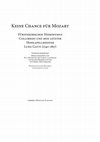
In: Keine Chance für Mozart: Fürsterzbischof Hieronymus Colloredo und sein letzter Hofkapellmeister Luigi Gatti (1740–1817), hrsg. von Eva Neumayr und Lars E. Laubhold, Lucca, LIM, 2013 (Veröffentlichungen zur Salzburger Musikgeschichte, 10), pp. 343–357, 2013
The aim of this article is to trace the path from Leopold Mozart’s letter of 11 June 1778 (Bauer/... more The aim of this article is to trace the path from Leopold Mozart’s letter of 11 June 1778 (Bauer/Deutsch, No. 452) to Gatti’s appointment as Hofkapellmeister at Salzburg in 1782–1783. The Archbishop of Olomouc who, according to Leopold, had recommended Gatti to the Archbishop of Salzburg was Anton Theodor (Antonio Teodoro) Colloredo von Waldsee-Mels, Hieronymus’ second cousin. The younger brother of Count Carlo Ottavio, president of the Royal Academy of Sciences and Arts of Mantua (now Accademia Nazionale Virgiliana), Anton Theodor was appointed Bishop of Olomouc on 6 October 1777 and promoted to archbishop when, two months later, the see was elevated to an archdiocese. Shortly after his appointment, Anton Theodor paid a visit to his mother and brothers at Mantua. Gatti, at that time serving at the Royal Academy of Mantua as maestro di cappella of the Colonia Filarmonica, took that opportunity to compose and perform – significantly, at his own expenses – a cantata in honour of the newly appointed archbishop. There exist no less than eight previously unknown sources for Gatti’s cantata; on the other hand, the manuscript presumed so far to be Gatti’s autograph score turns out instead to be the only source for Giacomo Rust’s Il Parnaso confuso (Salzburg, 1778). The remainder of the article attempts an estimate of Gatti’s achievements as a composer before he left Mantua for Salzburg.

In: Studi Pergolesiani / Pergolesi Studies 8, ed. by Claudio Bacciagaluppi, Hans-Günter Ottenberg and Luca Zoppelli, Bern, Lang, 2012, pp. 435–451, 2012
Conflicting attributions among flute concertos by either Neapolitan or German composers are frequ... more Conflicting attributions among flute concertos by either Neapolitan or German composers are frequent: see, e.g., the cases of Gerosa (B-Bc, D-MMm, I-MTventuri) vs. Hasse (Op. 3, No. 7), Leo (A-Wn) vs. L. Chevalier (A-KA), ?Palella (S-Skma, possibly by Gerosa) vs. Hasse (Op. 3, No. 2), Pergolesi (S-Skma) vs. Hasse (lost, formerly in D-HRD), and again Pergolesi (D-B, DK-Kk; listed in the 1763 Breitkopf catalogue, p. 20) vs. Hasse (Op. 3, No. 11; also for mandolin, D-B). Perhaps because of preconception, the general tendency of scholars has been to dismiss the possibility that such works originated in Naples. Yet every case must be judged individually; and regardless of their accuracy, such attributions offer clues for an understanding of how wide the circulation of Neapolitan instrumental music was—possibly no less than that of opera and sacred music.
A remarkable example is the flute concerto that has been handed down to us (also in a version for oboe) in the names of both Hasse and Domenico de Micco. Harmony, texture, and specific formal devices strongly diverge from the very homogeneous output of over 80 flute concertos by Hasse. On the other hand, they indicate a high degree of coherence with a Neapolitan composer from the late 1730s and may be seen as highly characteristic of the works of de Micco.
In: Paisiello e la cultura europea del suo tempo, a cura di Francesco Paolo Russo, Lucca, LIM, 2007 (Strumenti della ricerca musicale, 10), pp. 201–229, 2007
In: Commedia dell’arte e spettacolo in musica tra Sei e Settecento, a cura di Alessandro Lattanzi e Paologiovanni Maione, Napoli, ES, 2003 (I Turchini: Saggi, 2), pp. 389–449, 2003
In: Fonti d’archivio per la storia della musica e dello spettacolo a Napoli tra XVI e XVIII secolo, a cura di Paologiovanni Maione, Napoli, ES, 2001 (I Turchini: Saggi, 1), pp. 387–425, 2001
Books edited by Alessandro Lattanzi
This volume is a collection of nine previously unpublished papers delivered at the 2015 and 2018 ... more This volume is a collection of nine previously unpublished papers delivered at the 2015 and 2018 Spontini symposia at Jesi, Maiolati Spontini, and Erfurt. The essays mainly investigate Spontini’s late creative years and his critical reception in the 1820s–1840s, providing new insights into Spontini’s role as both a composer and Generalmusikdirektor within the context of Berlin’s musical life and German music festivals, his problematic relationship with Weber and Romantic opera, the extensive reworking of his earlier French works for the German stage, and his final achievement in music drama, Agnes von Hohenstaufen.
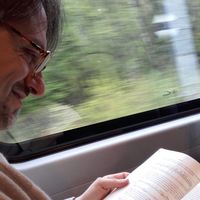


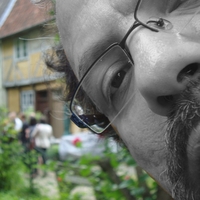




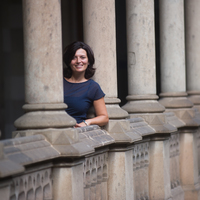

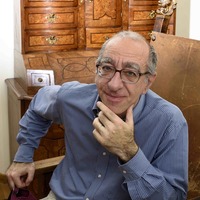
Uploads
Papers by Alessandro Lattanzi
A remarkable example is the flute concerto that has been handed down to us (also in a version for oboe) in the names of both Hasse and Domenico de Micco. Harmony, texture, and specific formal devices strongly diverge from the very homogeneous output of over 80 flute concertos by Hasse. On the other hand, they indicate a high degree of coherence with a Neapolitan composer from the late 1730s and may be seen as highly characteristic of the works of de Micco.
Books edited by Alessandro Lattanzi
A remarkable example is the flute concerto that has been handed down to us (also in a version for oboe) in the names of both Hasse and Domenico de Micco. Harmony, texture, and specific formal devices strongly diverge from the very homogeneous output of over 80 flute concertos by Hasse. On the other hand, they indicate a high degree of coherence with a Neapolitan composer from the late 1730s and may be seen as highly characteristic of the works of de Micco.